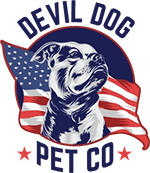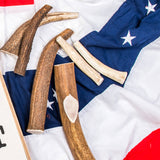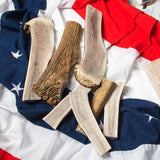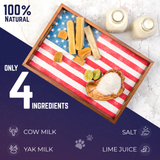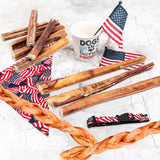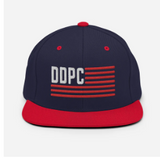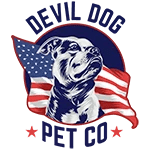What Are Himalayan Yak Chews?
Himalayan yak chews are hard cheese sticks crafted from yak and cow milk using centuries-old techniques in Nepal's mountain villages. These single-ingredient treats combine milk, a pinch of salt, and lime juice—then undergo a 4-week smoking and sun-drying process that creates an iron-hard, long-lasting chew. For more on the origins and cultural significance of the Himalayan yak, visit this external resource.
Key Takeaways
- Himalayan yak chews are traditional dog treats made from yak and cow milk, salt, and lime juice.
- They originate from Nepal's highlands and are crafted using centuries-old techniques.
- The chews undergo a four-week smoking and sun-drying process, resulting in a hard, long-lasting texture.
- These chews are fully digestible and help support dogs' dental health.
- Himalayan yak chews provide hours of safe chewing for dogs.
Table of Contents
- What Are Himalayan Yak Chews?
- How Traditional Yak Chews Are Made
- Yak Chews vs. Other Dog Chew Options
- Why Yak Chews Outperform Other Dog Chews
- Safety Guidelines for Yak Cheese Dog Chews
- Selecting the Perfect Yak Chew for Your Dog
- Proper Storage and Maintenance for Maximum Value
- Why Yak Chews Consistently Outperform Alternatives
- Making the Smart Choice for Your Dog's Chewing Needs
Unlike rawhide or synthetic alternatives, yak cheese for dogs is completely digestible. As your dog's saliva works the surface, the cheese gradually softens, allowing safe consumption of small pieces while maintaining the chew's structural integrity for extended gnawing sessions.
How Traditional Yak Chews Are Made
 yak cheese for dog">
yak cheese for dog">
Village cooperatives in Nepal follow the same process their ancestors used for generations. Fresh yak milk and cow milk get combined with lime juice, causing natural separation into curds and whey. The curds are then pressed into dense blocks, removing excess moisture.
The real magic happens during the smoking phase. Blocks hang over wood fires for days, absorbing that subtle smoky flavor dogs crave. Finally, the himalayan cheese undergoes weeks of high-altitude sun-drying, where thin mountain air and UV exposure create the characteristic hardness. Learn more about the traditional process at Himalayan Wild Yak.
Yak Chews vs. Other Dog Chew Options
When choosing between yak chews for dogs and alternatives like bully sticks or antlers, understanding the differences helps you pick the right match for your pup's chewing style and dietary needs. For a deeper dive into the pros and cons of bully sticks, check out our article on bully sticks for dogs.
- Yak Chews vs. Bully Sticks
- Yak chews last significantly longer and produce virtually no odor, while bully sticks offer meatier flavor but disappear faster. Power chewers benefit from yak's durability; flavor-motivated dogs prefer bully sticks' beef taste.
- Yak Chews vs. Antler Chews
- Antlers provide maximum longevity but risk tooth damage for aggressive chewers. Himalayan yak chews offer a middle ground—harder than bully sticks, gentler than antlers, and fully edible unlike both alternatives. If you're considering antlers, read our comparison on deer antler vs elk antler for dogs.
Why Yak Chews Outperform Other Dog Chews
Yak cheese chews deliver superior value through extended chew time, complete digestibility, and minimal mess. While bully sticks vanish in 20-30 minutes for power chewers, a properly sized himalayan yak chew provides days or weeks of entertainment.
| Chew Type | Digestibility | Odor Level | Average Duration | Mess Factor |
|---|---|---|---|---|
| Yak Chews | 100% digestible | Virtually odorless | 1-3 weeks | Minimal crumbs |
| Bully Sticks | 100% digestible | Strong beef odor | 20-60 minutes | Greasy residue |
| Rawhide | Poorly digestible | Chemical smell | 2-4 hours | Soggy mess |
| Antler Chews | Mineral dust only | No odor | 1-2 months | Fine powder |
Safety Guidelines for Yak Cheese Dog Chews
The key to safe yak chew for dogs enjoyment lies in proper sizing and supervision. Choose a chew longer than your dog's muzzle and thick enough that it cannot fit between the back molars.
Monitor rich marrow intake for sensitive stomachs. Some dogs experience loose stools when first introduced to yak cheese for dogs, especially if they consume too much too quickly. Start with 15-20 minute supervised sessions.
Selecting the Perfect Yak Chew for Your Dog
 himalayan dog chews reviews">
himalayan dog chews reviews">
Himalayan yak chews for dogs come in multiple sizes, from Small 4-packs for toy breeds to Beast-sized bars for giant breeds. Proper selection prevents choking hazards while maximizing chew value.
- Small (4-pack): Perfect for dogs under 25 lbs, multiple pieces prevent resource guarding
- Large: Ideal for 25-50 lb dogs, substantial enough for extended sessions
- XL: Designed for 50-75 lb dogs, thick diameter prevents back-molar lodging
- Monster: Built for 75-100 lb power chewers, weeks of entertainment
- Beast: Ultimate challenge for 100+ lb giants, maximum durability
Proper Storage and Maintenance for Maximum Value
Himalayan yak chews maintain their hardness and nutritional value when stored correctly. Keep unused yak sticks in a cool, dry place away from direct sunlight—properly stored chews remain fresh for years without degradation.
Unlike perishable treats, yak cheese for dogs requires minimal maintenance. Simply brush off any accumulated dust or debris between sessions. If the chew becomes too hard after storage, briefly soak in warm water for 2-3 minutes to restore optimal chewing texture.
Why Yak Chews Consistently Outperform Alternatives
The superiority of himalayan yak cheese chews becomes clear when examining long-term value. While initial cost appears higher than rawhide or basic treats, the extended duration and complete digestibility deliver unmatched return on investment.
- Nutritional Density
- Yak cheese provides high-quality protein, calcium, and phosphorus—essential nutrients that support bone health and muscle development
- Behavioral Benefits
- Extended chewing releases endorphins, reducing anxiety and destructive behaviors while promoting mental stimulation
- Dental Health
- The firm texture naturally scrapes plaque and tartar, supporting oral hygiene better than soft treats
- Convenience Factor
- Zero preparation required, no refrigeration needed, and virtually mess-free compared to raw bones or messy alternatives
Our dog Dexter demonstrated this value perfectly—a single Large yak chew lasted three weeks of daily 20-minute sessions, compared to bully sticks that disappeared in one sitting. The math speaks for itself: fewer purchases, less waste, happier dog.
Making the Smart Choice for Your Dog's Chewing Needs
Himalayan yak chews represent the gold standard in long-lasting, safe, and nutritious dog chews. Their unique combination of durability, digestibility, and dental benefits makes them an investment in your dog's health and happiness.
Whether you're dealing with a destructive puppy, an anxious rescue, or a power-chewer who demolishes everything else, yak cheese chews deliver consistent results. The traditional Himalayan crafting process creates a product that modern alternatives simply cannot match. For more healthy treat options, see our guide on single ingredient dog treats.
Start with a properly sized himalayan yak chew today, and experience why discerning dog owners consistently choose this time-tested solution for their most challenging chewers. Your dog—and your furniture—will thank you. For more tips on canine behavior and enrichment, visit why does my dog do that.
Download the FREE 10-Step Dog Prep Guide
Frequently Asked Questions
What is a Himalayan yak?
A Himalayan yak is a sturdy, long-haired bovine native to the high-altitude regions of the Himalayas. These animals are well-adapted to harsh mountain climates, providing essential resources like milk, meat, and fiber to local communities.
Why is yak meat so expensive?
Yak meat is costly due to the challenging environment where yaks live, limited herd sizes, and the labor-intensive process required to raise and harvest them sustainably. The remote Himalayan terrain and traditional herding methods add to the expense, making yak products premium and rare.
Are Himalayan yak chews good for dogs?
Absolutely. Himalayan yak chews are durable, long-lasting, and natural, crafted from yak and cow milk using traditional methods. They’re digestible, low in odor, and provide mental stimulation while being gentler on teeth than bone or antler chews.
How much is a Himalayan yak?
The price of a Himalayan yak varies widely depending on age, sex, and purpose but generally ranges from several hundred to a few thousand dollars. Their value is tied to their role in local economies and the labor-intensive care needed at high altitudes.
Can humans eat Himalayan yak cheese?
Yes, Himalayan yak cheese is a traditional staple for Himalayan communities and is edible for humans. It’s made through a slow drying and smoking process, resulting in a hard, flavorful cheese often used in local dishes or as a preserved food source.
Is A yak aggressive?
Yaks are typically docile herd animals but can become aggressive if threatened, especially males during mating season or when protecting calves. Proper handling and respect for their space keep interactions safe and calm.
